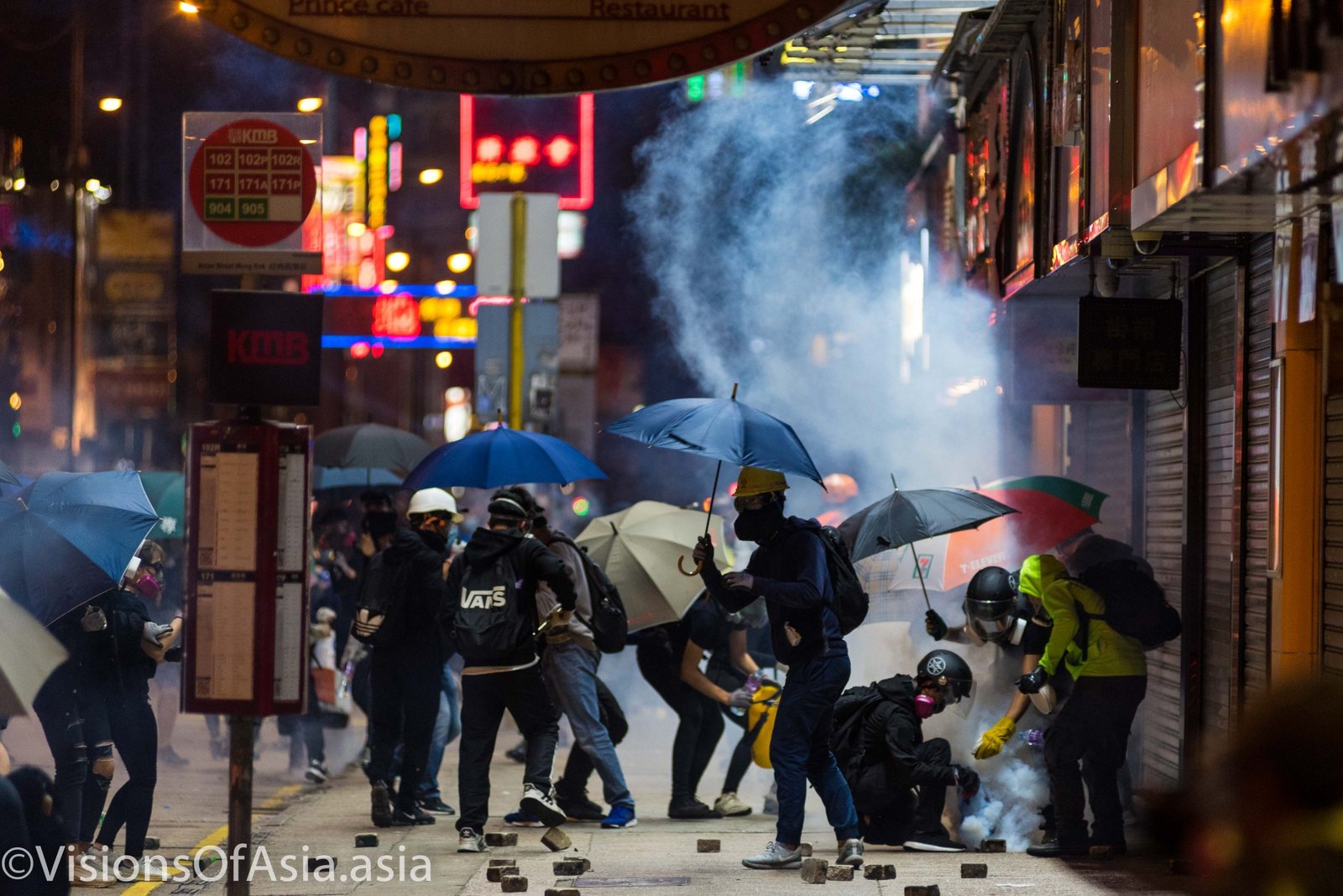It was a couple of weeks ago that we found ourselves in one of the most intense fights of the time between protesters and police in Hong Kong (where even Wanchai looked tame). For six to seven hours, I was literally in the war zone, between relentless assaults by protesters equipped with molotov cocktails and unceasing shots of tear gas and rubber bullets.
The flashpoint at Chinese University of Hong Kong
The initial flashpoint was a decision by the Hk police to take over the Chinese University of Hong Kong, after the protesters retrenched there, started throwing objects on the rails of the East Rail line and the Tolo highway (leading to Chinese border).
This triggered a strong police response and an attempt to retake bridges leading to the Chinese University from across the highway. Protesters carried out a fierce battle with petrol bombs facing off with police and water cannons.
In response, the whole city responded to calls to support the protesters, starting a sort of mini-insurrection across all of Hong Kong, just to keep police busy. One of these flashpoints was the police station of Mongkok, located just near to the Prince Edward MTR station.
Mongkok in upheaval
Since last June, Mongkok has been one of the most troublesome areas for the protests, with a lot of the protesters always spoiling for a fight in that area. It did not help that since the forceful entry and indiscriminate beating that took place in an MTR station on August 31st, many Hongkongers are convinced that people died in Prince Edward.
As I arrived on site, I could already see some sign of the troubles, with protesters running from the police. As I neared Nathan road, I came across a road filled with bricks.

As I get on Nathan road, I found the water cannon was arriving to disperse the protesters. I kept my distances from the engine and took cover, as it started spewing its water mixed with irritating agents such as CS.

Later, as the clearance progressed upwards on Nathan road, people sought refuge in a bank to escape the dangerous chemical-laced water.

Protesters kept their distances though, and even though the riot police chased them, and swept clear the obstacles on Nathan road.

Fraught relations between police and journalists
As I walked back down on Nathan road, towards Mongkok, I came across a group of riot police who immediately shot a volley of tear gas to the civilians in my general direction. I encountered a group of riot police and police public relations bureau staff who were pretty angry at the HK journalists who were with me, calling them “fake journalists” and complaining that they were suffering too. They demanded us to march at the front of their lines (contrary to other teams that asked us to stay well behind of them).
As this first sweep came to an end, we learned later that the water cannon was sent to the Chinese University, leaving the roads near Mongkok pretty much undefended. And soon, taking advantage of the removal of the water cannon, the protesters came back to the charge, and besieged the Prince Edward police station.
“Infinity War” takes a real meaning
For the first time, the meaning of “Infinity War” crept into mind as we spent endless hours watching protesters creep forward, pull back, come back to the charge, undaunted by the volleys of tear gas and rubber bullets.

Despite this, the protesters kept charging back with petrol bombs trying to target the police station. One of them even set fire to his own hair in the process.
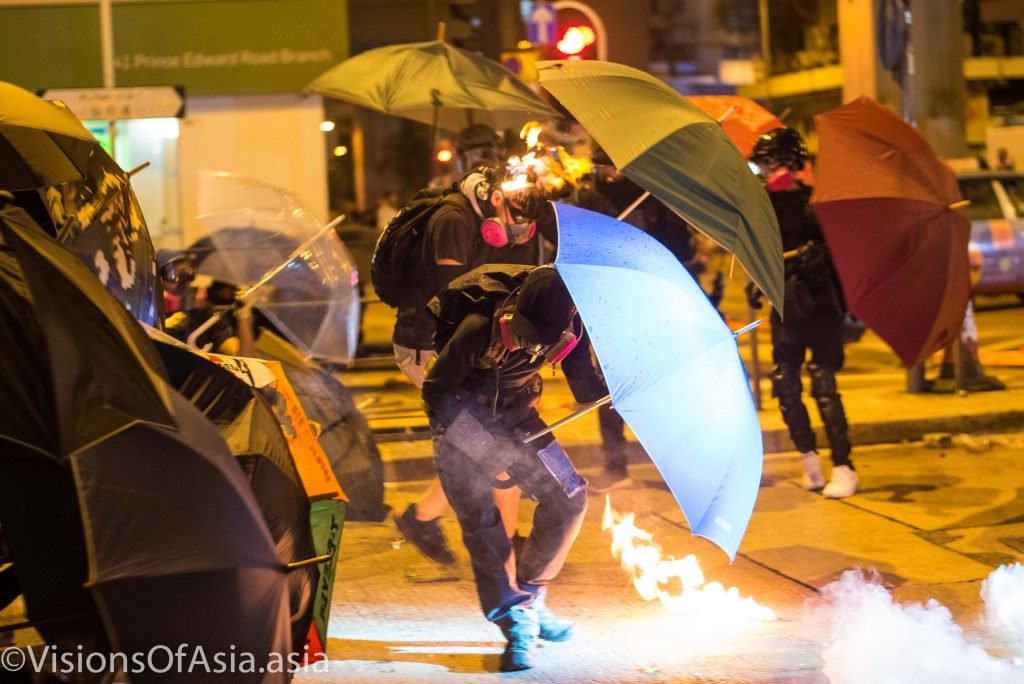
When pressure increased on the police station, riot police made sorties to chase the protesters. Despite this, protesters kept trying to creep nearer to the police station.
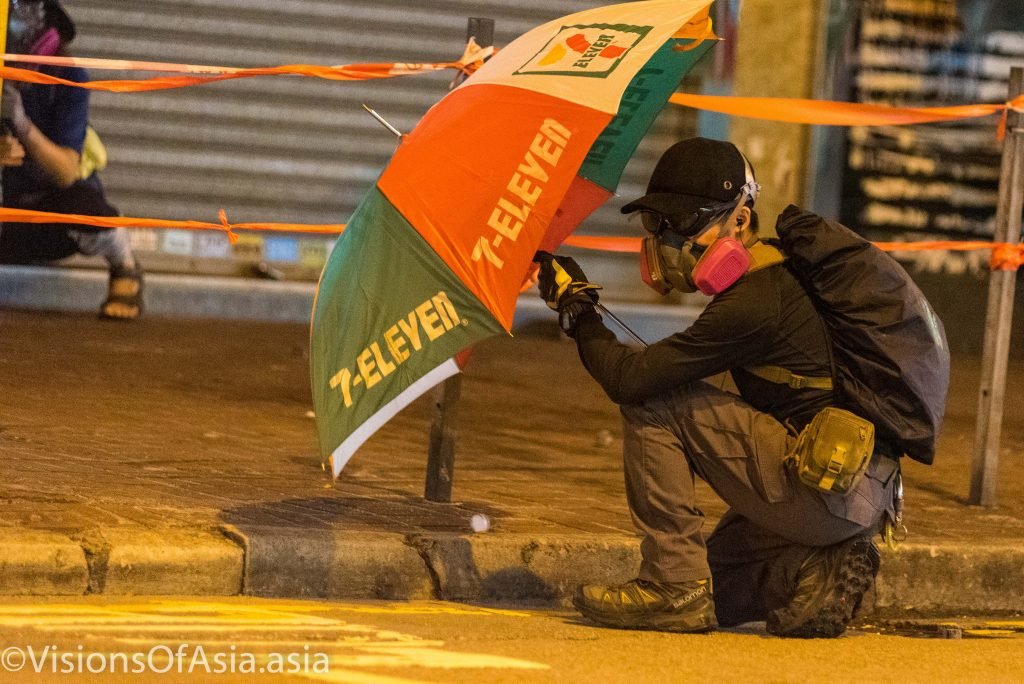
Casualties
As time went by, casualties mounted too, people getting shot into the legs by rubber bullets.

On occasions, protesters would show great sense of sacrifice, running out to protect a fallen comrade.
The most saddening part was probably to see a young kid being injured and treated by first aiders.

Continuous assaults
Notwithstanding the casualties, the protesters kept coming back to attack, until the moment that riot police reinforcements joined in to push back the attackers.

Around 2AM, after four hours of continuous clashes, the police managed to charge and oblige the protesters to pull back. The pushback by riot police was swift, but most of the protesters already pulled back at that time.

Riot police however did not push all the way to Argyle street. They stopped halfway to Mongkok, then pulled back. As they pulled back, protesters then came back and reinforced obstacles on Nathan road.
By 2.30 AM, you would think the protesters were exhausted with the fight. And in fact, no. They were just waiting for the next onslaught.
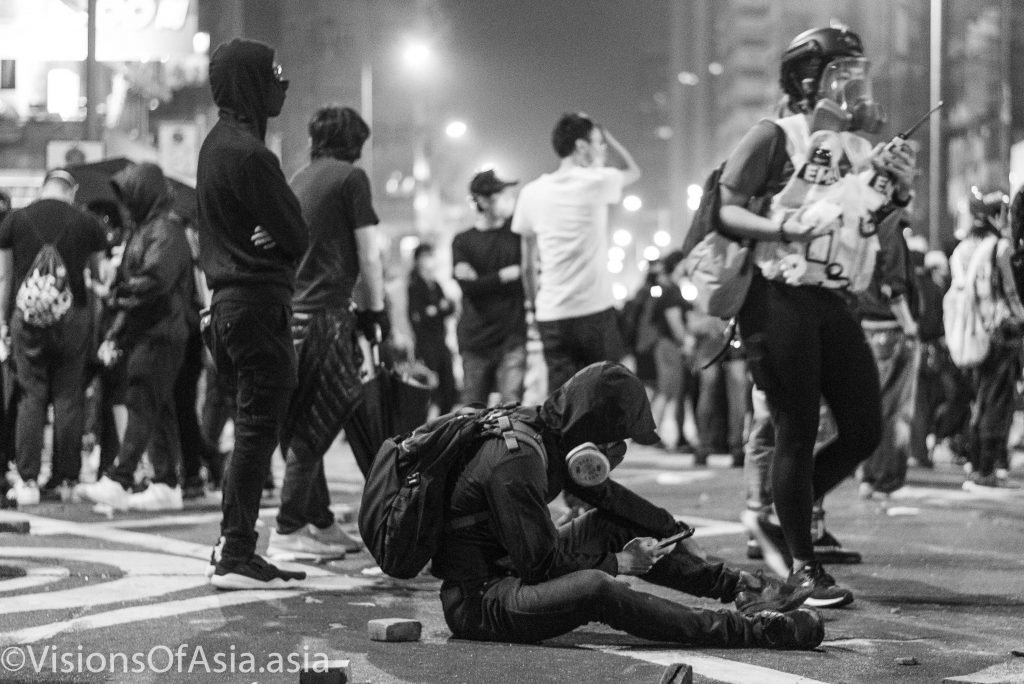
Others stood up, ready and awaiting the “enemy”.
Later, after the police pulled back, it was a race to create obstacles across the road, to slow down the riot police. They even bound ropes across the street, which was a level of preparedness unseen before this.
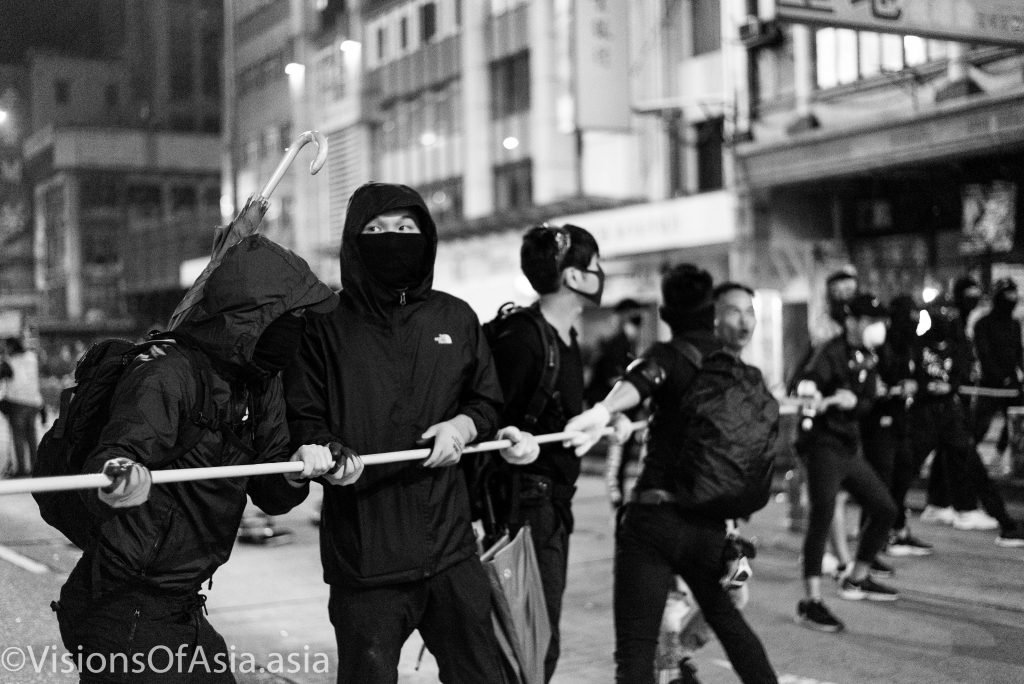
A slow winding down
By 3 AM, the police and the protesters were both exhausted, and the thirst for facing off with rubber bullets had worn off. I decided to call it a night too, as the protester’s prediction that an assault would come at 3 AM looked increasingly unreal.

Many protesters went home, leaving the numbers on Nathan road a fraction of what they were. Some of the protesters, like the one featured, sat in a comfortable armchair.
A pyrrhic war?
Despite the long war against the police, the actions in Mongkok and Chinese University were only going to preannounce the terrible days of Polytechnic University.
But this relentless warfare also had as consequence (at least at PolyU) that several hundreds of protesters were arrested trying to “rescue” their comrades.
This unnecessary exposure has seriously depleted the ranks of frontliners, and in part, distanced some of their supporters too. Today, peaceful protests are dwindling in numbers, and meanwhile, all other demands beyond the withdrawal of the bill have not been satisfied. Future definitely looks bleak in Hong Kong.

